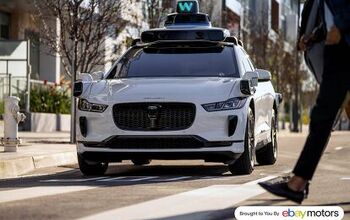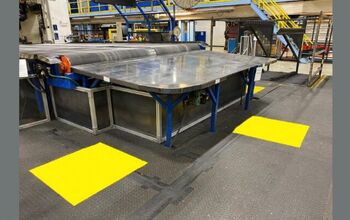Here's Why Your Car Insurance Has Become More Expensive

Millions of vehicle owners have been shocked when opening their most recent auto insurance bills. Rates are up across the board, hitting $2,543 in 2024, which represents a 26 percent increase from 2023. CNBC and Bankrate reported on the rate increase, noting that some states and drivers have it much worse than others.
The reports found that Americans are spending 3.41 percent of their incomes on car insurance, reaching an average of $212 per month for full coverage insurance. Drivers in Louisiana spent the most on coverage as a percentage of their income, while people in Massachusetts paid the lowest percentage.
What’s causing the jump in insurance rates nationwide? A few factors have aligned, including longer repair times, more expensive parts, higher-priced rental cars, and more. Cars in general are also becoming more costly to fix. There have been plenty of stories of high-priced Tesla and Rivian repairs, but even gas vehicles can be ridiculous because of the tech and materials employed in production.
The rise in car thefts, including of Kias and Hyundais, has also played a role in the price increases. Urban areas, where it was already more expensive to insure a car, have seen jumps in crime, and insurers charge extra when they view a situation as risky.
Of course, all of these factors ignore the most important things insurers use to determine car insurance rates: You. Your age, driving record, credit, and many other factors play a hugely significant role in determining what you pay for car insurance. If you drive like a maniac and have accumulated several speeding tickets, higher insurance rates should come as no surprise.
[Image: Photo Spirit via Shutterstock]
Become a TTAC insider. Get the latest news, features, TTAC takes, and everything else that gets to the truth about cars first by subscribing to our newsletter.

Chris grew up in, under, and around cars, but took the long way around to becoming an automotive writer. After a career in technology consulting and a trip through business school, Chris began writing about the automotive industry as a way to reconnect with his passion and get behind the wheel of a new car every week. He focuses on taking complex industry stories and making them digestible by any reader. Just don’t expect him to stay away from high-mileage Porsches.
More by Chris Teague
Latest Car Reviews
Read moreLatest Product Reviews
Read moreRecent Comments
- Jeanbaptiste 2022 Tesla model 3 performance ~35000 miles tires - ~$1000ish. Several cabin filters ~$50
- El scotto No rag-top, no rag-top(s) = not a prestigious car brand. Think it through. All of the high-end Germans and Lexus have rag-tops. Corvette is really its own brand.World-leading engines. AMG, M, S and well Lexus is third-world tough. GM makes one of the best V-8s in the world in Bowling Green. But nooooo, noooo, we're GM only Corvettes get Corvette engines. Balderdash! I say. Put Corvette engines in the top-tier Cadillacs. I know GM could make a world-class 3.5 liter V-6 but they don't or won't. In the interior everything that gets touched, including your butt, has to feel good. No exceptions.Some think that those who pay above MSRP and brag about it are idiots. Go the opposite direction, and offer an extended 10-year 100,000-mile factory warranty. At a reasonable price. That's Acura's current business model.
- Carrera 2014 Toyota Corolla with 192,000 miles bought new. Oil changes every 5,000 miles, 1 coolant flush, and a bunch of air filters and in cabin air filters, and wipers. On my 4th set of tires.Original brake pads ( manual transmission), original spark plugs. Nothing else...it's a Toyota. Did most of oil changes either free at Toyota or myself. Also 3 batteries.2022 Acura TLX A-Spec AWD 13,000 miles now but bought new.Two oil changes...2006 Hyundai Elantra gifted from a colleague with 318,000 when I got it, and 335,000 now. It needed some TLC. A set of cheap Chinese tires ($275), AC compressor, evaporator, expansion valve package ( $290) , two TYC headlights $120, one battery ( $95), two oil changes, air filters, Denso alternator ( $185), coolant, and labor for AC job ( $200).
- Mike-NB2 This is a mostly uninformed vote, but I'll go with the Mazda 3 too.I haven't driven a new Civic, so I can't say anything about it, but two weeks ago I had a 2023 Corolla as a rental. While I can understand why so many people buy these, I was surprised at how bad the CVT is. Many rentals I've driven have a CVT and while I know it has one and can tell, they aren't usually too bad. I'd never own a car with a CVT, but I can live with one as a rental. But the Corolla's CVT was terrible. It was like it screamed "CVT!" the whole time. On the highway with cruise control on, I could feel it adjusting to track the set speed. Passing on the highway (two-lane) was risky. The engine isn't under-powered, but the CVT makes it seem that way.A minor complaint is about the steering. It's waaaay over-assisted. At low speeds, it's like a 70s LTD with one-finger effort. Maybe that's deliberate though, given the Corolla's demographic.
- Mike-NB2 2019 Ranger - 30,000 miles / 50,000 km. Nothing but oil changes. Original tires are being replaced a week from Wednesday. (Not all that mileage is on the original A/S tires. I put dedicated winter rims/tires on it every winter.)2024 - Golf R - 1700 miles / 2800 km. Not really broken in yet. Nothing but gas in the tank.


































Comments
Join the conversation
Odd that the article doesn't mention one of the biggest reasons for rising premiums (particularly in states like Louisiana and Florida) - the increase in losses by insurance/reinsurance companies due to the increase in Billion dollar extreme weather events.
This also holds true for home insurance premiums.
Also the article does not mention that many manufactures (looking at you GM) are reporting your driving habits to LexisNexis and insurers are rating your policy on that information too.